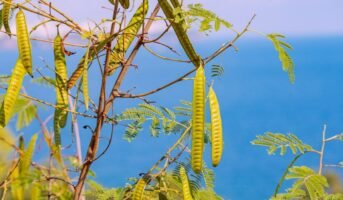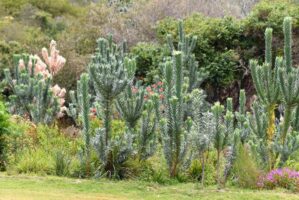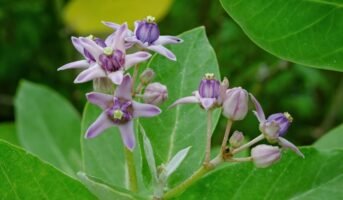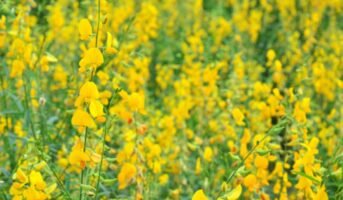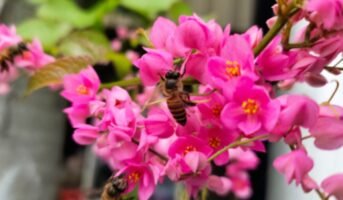Annona reticulata, also known as the custard apple or sugar apple, is a small tree that grows well in warm climates. Annona reticulata is a quick-growing deciduous tree with a rounded or spreading crown. Plants of this species are commonly seen in tropical garden plots across the globe. The fruit is rich in beneficial nutrients like magnesium and potassium and contains antioxidants.

Source: Pinterest
Annona Reticulata: Features
Annona reticulata, also known as sugar apple, custard apple, and bullock’s heart, is a tiny, tropical, evergreen to deciduous tree indigenous to the West Indies. Early on, it was introduced to the continent, where it is presently farmed in southern Mexico, Central America, Peru, and Brazil. Green, slender, oblong-lanceolate to lanceolate leaves that are long-pointed and oblong-lanceolate to oblong-lanceolate in shape are a distinguishing characteristic of this 20-35-foot-tall plant (to 4-8″ long). When leaves are crushed, a foul odour is produced. Near the northernmost limit of its distribution, leaves may fall during the winter (e.g., in southern Florida). In the spring, little suspended clusters of fragrant, yellowish-green blooms (up to 1″ long) appear. Flowers are succeeded by reddish-yellow to brown fruits (up to 5 inches long) with delicious, custard-like white flesh. Typically, each fruit weighs 1-2 pounds. Each fruit has a polygonal plate covering. Due to the possibility of reticulated (net-veined) fruit skin, this special epithet is employed. Size (heart-shaped to globular to irregular), flavour and quality of fruits vary (juicy and sweet to hard and mediocre).
Annona reticulata: Keys facts
| Common name | Custard apple, sugar apple |
| Botanical name | Annona reticulata |
| Family | Annonaceae |
| Height | 7 m |
| Soil | Well-drained soil |
| Growth rate | medium |
| Bloom rate | spring, summer |
| Fruit | edible |
What is Annona reticulata?
Annona reticulata is a small deciduous, semi evergreen tree belonging to the Annonaceae plant family. It is a part of the Annona genus, a class of flowering plants comprising 166 species of trees and shrubs, from the Neotropical and Afrotropical trees. At present, seven Annona species and one hybrid are cultivated for domestic and commercial use. Annona reticulata have widely known uses due to their edible and nutritious fruits.
Annona reticulata: Natural Habitat
The native habitat of the Annona reticulata plant is in the Caribbean and Central America region. It grows from sea level to 1,500 metres height in regions of Central America with alternating wet and dry seasons. It is cultivated and naturalised across tropical areas such as Southeast Asia, Taiwan, India, Pakistan, Australia, and Africa. In India, the plant species has shifted from initial cultivation into the wild.
Annona reticulata: Propagation
The plant may be cultivated in home gardens. It finds its value as rootstock for superior Annona species, including sugar apple. This is particularly required under humid conditions. Further, the plant is also considered a genetic resource for hybridization.
Annona reticulata: How to grow?
Fill a container with potting soil that drains well. A seed-raising mix, either purchased or homemade, can be used. In a pot, the seeds should be buried about an inch deep with a 2-inch gap between them. To ensure the soil doesn’t dry out and the seeds can germinate, fill the pot with water, and set it somewhere with indirect sunlight. Three weeks at 18 to 25 degrees Celsius is all it takes for the Annona reticulata to germinate, and then once the seedlings reach a height of three to four inches, it’s time to transplant them.
Annona reticulata: How to care?
To grow an Annona reticulata, you need only a humid environment and adequate drainage. It does best in humid climates and a variety of soil types.
Sunlight and sun tolerance
The plants have medium sun tolerance. However, they would require adequate sunlight for their proper growth.
Cold tolerance
Annona reticulata is not tolerant to frosts. After it is established, the plant may be able to withstand short light frost.
Soil
Growing Annona reticulata requires a location that has a relatively low elevation, deep, rich soil; an abundance of water; and good drainage. They are able to survive in a variety of soil types, but they do best in well-drained, medium-grade soil that has a pH between 6.5-7.6 and moderate fertility.
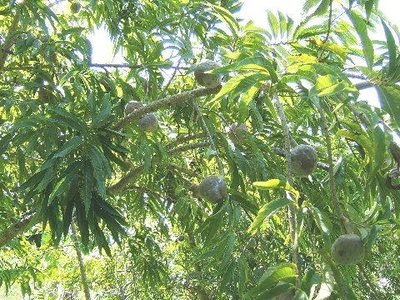
Source: Pinterest
Water
When the tree enters its dormant period, you should stop providing it with water altogether and instead give it a thorough soaking every two weeks. Midwinter is the time to fertilize cherimoyas with a balanced fertilizer such as 8-8-8, and then do so again every three months after that. Until the tree starts producing fruit, you should keep increasing this quantity each year.
Climate
There is a degree of variation in the degree to which each species of annona originates from the tropics and thrives in hot, dry climates. When the Custard Apple is blossoming, it needs a hot, dry climate, but when it’s setting fruit, it needs high humidity. Flowering happens in May when the weather is hot and dry, while fruit setting happens when the monsoon season starts. Pollination and fertilization might suffer when humidity levels are too low.
Disease and pest
The most frequent causes of injury are frostbite, which occurs when the temperature is too low, and burns, which occur when the temperature is too high. The leaves fall off because there is little water. When growing conditions in the soil are either too dry or too wet, the roots of the plant begin to rot. This annoyance can be prevented by utilizing soil that is suited for the purpose and watering in the appropriate manner.
Pruning
Regular pruning of the plants may be needed to promote its growth. It helps in structuring the plant. Moreover, pruning helps in increasing the number of flowers per branch. It also helps in fruiting. Also, disease or pest infected parts of the tree may affect healthy branches, pruning helps removes such branches.
Annona reticulata: Harvesting
A well-cared-for mature tree could produce fruits weighing up to 100 pounds. When the fruit is fully mature and no longer green, that’s when it’s time to pick it. Over time, the fruit’s skin becomes more pliable and gives in to light pressure as it ripens. The skin is extremely delicate, so the fruit requires special care.
Annona reticulata: Pests associated
The chalcid fly causes severe damage to Annona reticulata. In India, ripening fruits are protected from fruit bats by being placed in bags or nets.
Annona reticulata: Toxicity
The kernels of the seed are extremely poisonous. There is an insecticidal impact on the seeds, as well as the leaves and immature fruits. Lice can be eliminated with the leaf juice. The caustic and irritating sap that is produced when branches are chopped can cause significant damage to one’s eyes. The bark has an anonaine concentration of 0.12%. When an extract from the bark was injected into an experimental toad, it resulted in paralysis in one of the toad’s hind limbs.
Annona reticulata: Health benefits
Annona reticulata plants are known to possess wide-ranging medicinal properties. They have gad traditional uses in treating epilepsy, dysentery, bacterial infections, fever, cardiac problems, etc. The fruits are known to have anti-oxidants and help boost digestive health and prevent blood pressure.
Annona reticulata: Uses
- The decoction made from the bark is used as a tonic and, due to its astringent qualities, can be used as a therapy for diarrhoea and dysentery.
- The dried unripe fruit is used to treat gastrointestinal issues like diarrhoea and dysentery.
- In extreme cases, a litre of water is boiled with the leaves, bark, and green fruits for 5 minutes to make a highly potent decoction.
- The leaves can be used for tanning. They can also be used to make a dark blue or black dye.
- Young twigs can be a great source of fibre.
- Annona reticulata fruits are rich in antioxidants and vitamin C, which can delay the ageing process of the skin.
- Annona reticulata plant is also known to have a pleasant fragrance due to the presence of around 180 compounds.
FAQs
Is Annona reticulata edible?
Yes, Annona reticulata, or custard apple, is edible.
What is Annona reticulata's common name?
Annona reticulata is also known as custard apple.
Is Annona reticulata an invasive plant?
Annona reticulata is considered to be an invasive plant.
Housing News Desk is the news desk of leading online real estate portal, Housing.com. Housing News Desk focuses on a variety of topics such as real estate laws, taxes, current news, property trends, home loans, rentals, décor, green homes, home improvement, etc. The main objective of the news desk, is to cover the real estate sector from the perspective of providing information that is useful to the end-user.
Facebook: https://www.facebook.com/housing.com/
Twitter: https://twitter.com/Housing
Email: [email protected]

